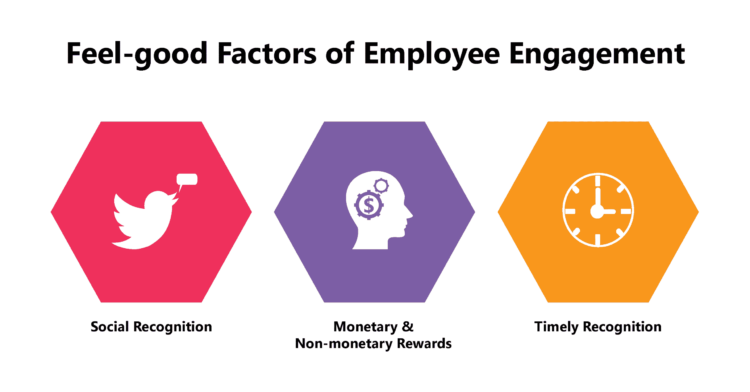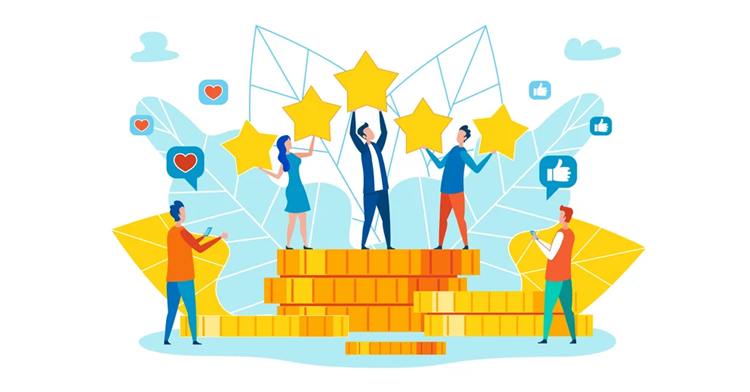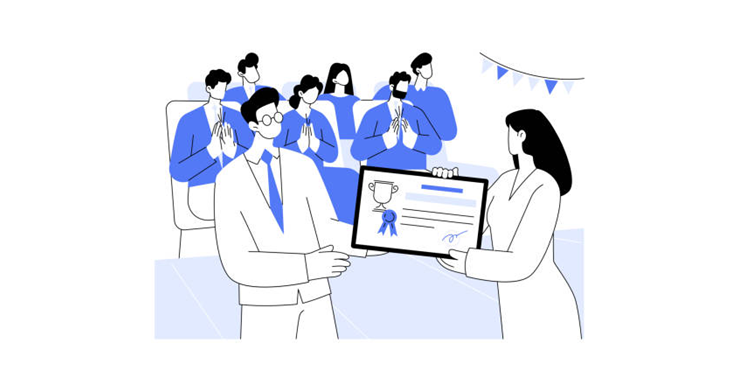1. Boosts Employee Engagement and Productivity: Recognition significantly enhances employee engagement, increasing productivity, creativity, and retention. Companies report notable gains in profitability and customer satisfaction.
2. Creates a Positive Work Environment: Timely and spontaneous recognition, whether through social recognition, peer-to-peer acknowledgment, or rewards, fosters a feel-good atmosphere, making employees feel valued and appreciated.
3. Combine Monetary and Non-Monetary Rewards: A mix of monetary rewards (like bonuses) and non-monetary benefits (such as sponsored training or public acknowledgment) effectively drives engagement by catering to different motivational needs.
4. Encourages Innovation and Team Spirit: Recognition, particularly social and peer-based, promotes a culture of appreciation, collaboration, and continuous improvement, which is crucial for innovation and achieving organizational goals.
An engaged workforce is critical for the success of any organization. Employee recognition is one means of driving engagement. Let’s understand how important recognition is for employee engagement.
Very broadly, employee engagement is the art and science of making employees feel good. about everything.
About themselves, the organization, working in the organization, and working with each other.
This ‘feel-good factor’ of employee engagement can happen through tangible and intangible means.

According to a report by the Society of Human Resource Managers, companies with good employee recognition programs and career development guidance saw a 63% increase in employee productivity.

The same report also suggested that such companies experienced a 58% return on their profit margins, a 52% increase in customer retention, and a 51% increase in employee retention.

In today’s day and age, social recognition plays a vital role in what makes us feel good.
People crave likes and comments on social media platforms like Facebook and Instagram.
Similarly, employees value social recognition of their achievements at the workplace.

Another report by SHRM terms peer-to-peer recognition to be way more effective than managerial recognition, with 41% of the companies that implement this mode of recognition experiencing a positive increase in customer satisfaction.

Monetary rewards can be an additional factor in addition to social recognition.
Non-monetary benefits like sponsored conferences, training programs, and direct interactions with top brass might work great!
Both monetary and non-monetary rewards add up to the ‘feel-good factors’ for engaging employees.

The most critical aspect of recognition is spontaneity, which is appreciation as and when something good happens.
A pat on the back or a round of applause at a team meeting; all make a difference, if on time.
The perceived value of the award needs to align with the level of the achievement.

A recent Harvard Business Review has also stated that an effective recognition strategy helps create 30% more productive employees besides enhancing their creativity three times. It also helps in creating 37% more successful salespeople than the less engaged ones.
All said and done, recognition plays an integral part in employee engagement no matter how it is executed.
At the end of the day, employees’ feelings of happiness matter most, whether they receive a pat on the back, a trophy, a shopping voucher, or a trip to the Bahamas!

Lead author: Sagar Chaudhuri, the Co-Founder and CEO of HiFives. He is an HR Tech Evangelist with over 25 years of corporate and entrepreneurship experience. In the past, Sagar has worked in leadership roles with companies such as Genpact, Infosys, and ICICI Bank. He has an engineering degree from IIT Kharagpur and an MBA from IIM Lucknow. Connect on LinkedIn
To stay updated on the latest HiFives blogs, follow us on Twitter (@MyHiFives)